Overview
The Juche Tower, officially known as the Tower of the Juche Idea, is a white granite monument in the heart of North Korea’s capital, Pyongyang. It was constructed to immortalise the accomplishments of President Kim Il Sung in devising and implementing the Juche Idea, North Korea’s national ideology.
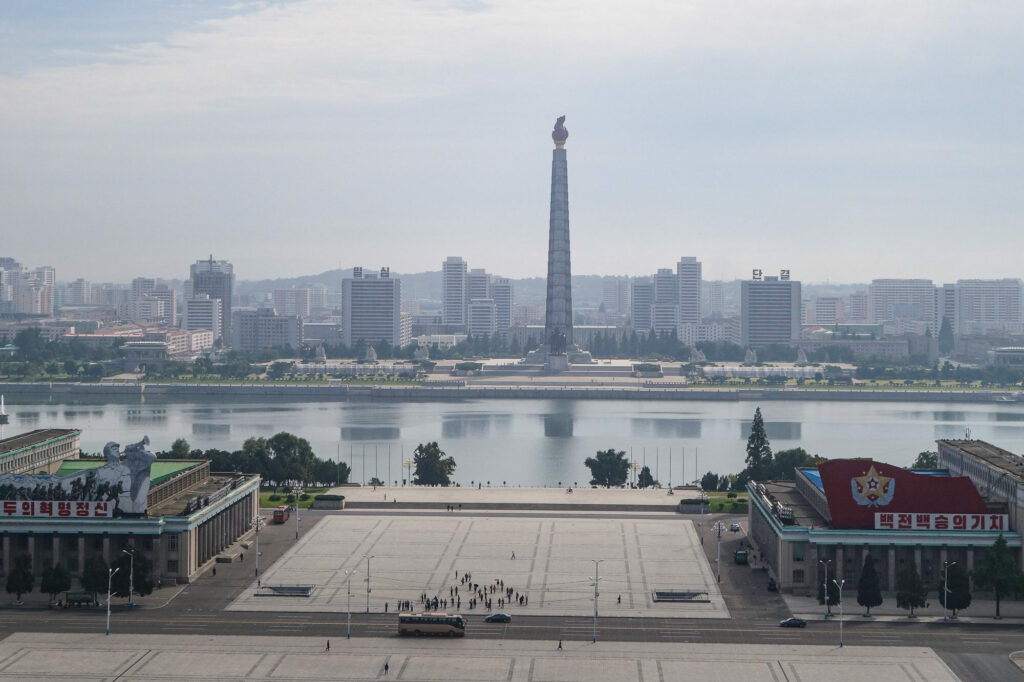
The Tower of the Juche Idea was unveiled on April 15, 1982 on the occasion of the 70th birthday anniversary of President Kim Il Sung and is located on the eastern side of the Taedong River, symmetrical to Kim Il Sung Square and the Grand People’s Study House. This prominent position is no accident, as it forms the backdrop to North Korea’s most important political events.
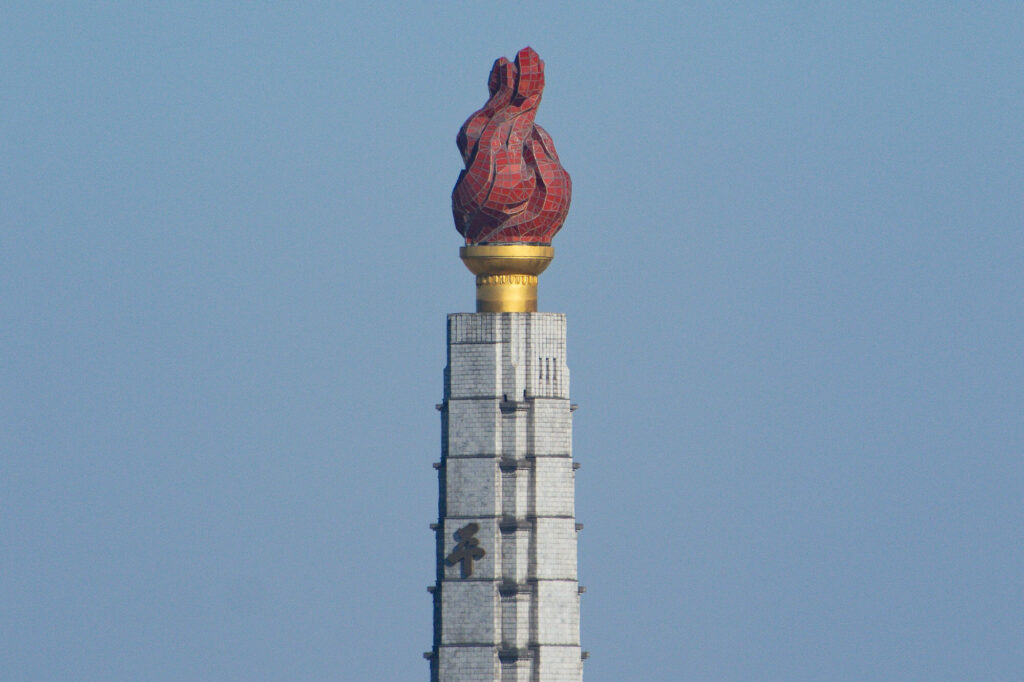
The Juche Tower stands a total of 170m high, of which 150m is a stone column crowned by a 20m golden torch with an illuminated red glass flame. The wider site of the Juche Tower includes a prominent group sculpture at its base and six surroundings sculptures signifying the societal impact of the Juche Idea.
What is the Juche Idea?
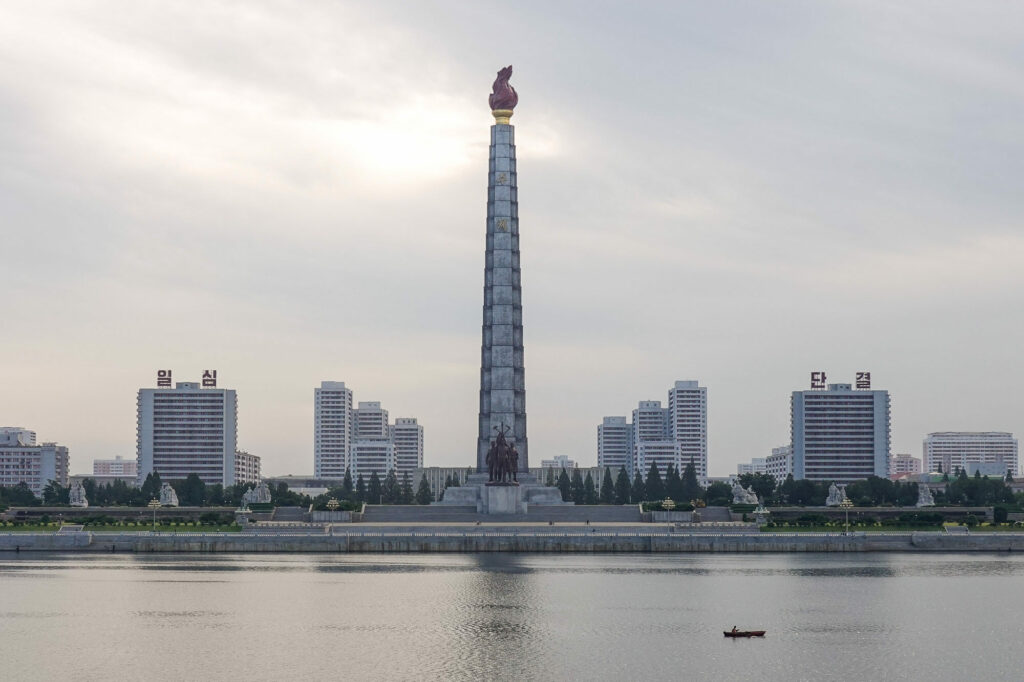
Chiefly, the Juche Tower represents the Juche Idea founded by President Kim Il Sung. The Juche Idea is the cornerstone of North Korea’s politics, economy, and culture — it’s the guiding ideology of the Workers’ Party of Korea, the ruling party since the country’s formation.
The Juche Idea is often simplified as ‘self-reliance’, or that ‘man is the master of the world and his own destiny’. Such independence, as defined by the Juche Idea, is seen as key to achieving socialist prosperity, and the Juche Tower is the striking beacon symbolising the victories and struggles on this journey.
While a complex topic, in short, the Juche Idea underpins North Korea’s isolationist nature and is critically important to its identity.
Design and Symbolism
The Juche Tower was designed and produced by the Merited Sculpture Production Company of the Mansudae Art Studio, responsible for many of North Korea’s famous sculptures such as the Mansudae Grand Monument, Monument to Party Founding, and the Arch of Triumph. The design is inspired by ancient stone pagodas, of which remnants can be found at heritage sites across the country.
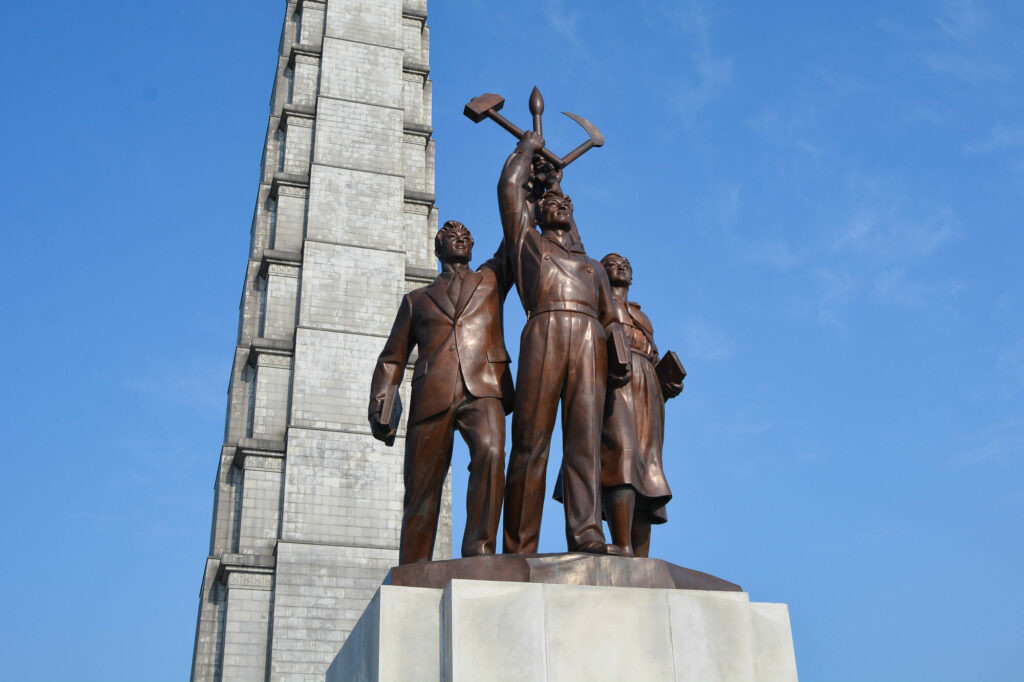
As with all North Korean monuments, the Juche Tower is rich in symbolism. These aspects are listed below:
- The 70 tiers of the tower body symbolises the 70th birthday anniversary of President Kim Il Sung
- The tower consists of 25,550 blocks of stone, one for each day of President Kim Il Sung’s life until his 70th birthday
- The walls of the tower base (left and right) are carved with 70 magnolia flowers, the national flower of North Korea
- The tower’s flame is always illuminated at night, signifying the great victory of the Juche Idea
- The position of the tower is symmetrical to the Grand People’s Study House which represents the strong connection between the people and the Juche Ideology
- At the tower base, facing the Taedong River, is a bronze sculpture of a worker, peasant and working intellectual holding a hammer, sickle and calligraphy brush. This is the emblem of the Workers’ Party of Korea, of which the Juche Idea is the guiding ideology
- The front and rear faces of the tower are emblazoned with the word ‘Juche’ (in Korean) in golden lettering
- The front base wall is inscribed with a poem praising President Kim Il Sung’s achievements
Interesting Facts
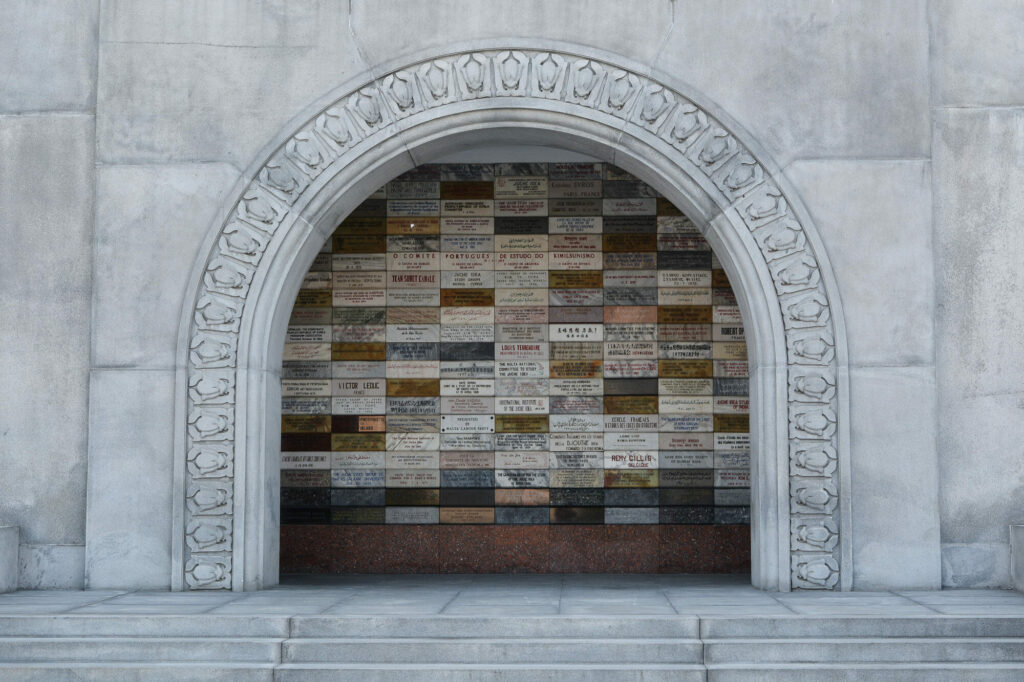
- The entry to the Juche Tower has a wall of plaques made from rare gemstones sent by study organisations and followers of the Juche Idea worldwide. There are over 250 of these from over 80 countries, the first was donated by a group in Mali on April 15, 1969
- The Juche Tower is the tallest granite tower in the world, and at 170m is taller than the Washington Monument in the United States by just 1 metre (169m)!
- Chairman Kim Jong Il is credited for tutoring on the design of the tower and guiding its construction. He desired the Juche Tower to be built ‘large and ‘magnificent in keeping with its ideological content’
- The Arch of Triumph, another of North Korea’s most significant monuments, was unveiled the day before the Juche Tower on April 14 as part of President Kim Il Sung’s birthday festivities
- North Korea uses its own calendar, the Juche calendar. The calendar pivots from the year of President Kim Il Sung’s birth, 1912 which is year 1
- The Juche Tower is a common tourist attraction for locals, and on occasion, there is an official photographer at the top which makes a unique and memorable souvenir!
- As part of the Juche Tower construction, two fountains that reach 150m high were installed in the Taedong River, often turned on during national holidays
Visiting on Our Tours
The Juche Tower is your best opportunity for an unobstructed birds-eye view of Pyongyang and to learn about the Juche philosophy. We include the Juche Tower on all itineraries visiting Pyongyang and whenever possible, we’ll ascend in the morning when the lighting is best for photos!
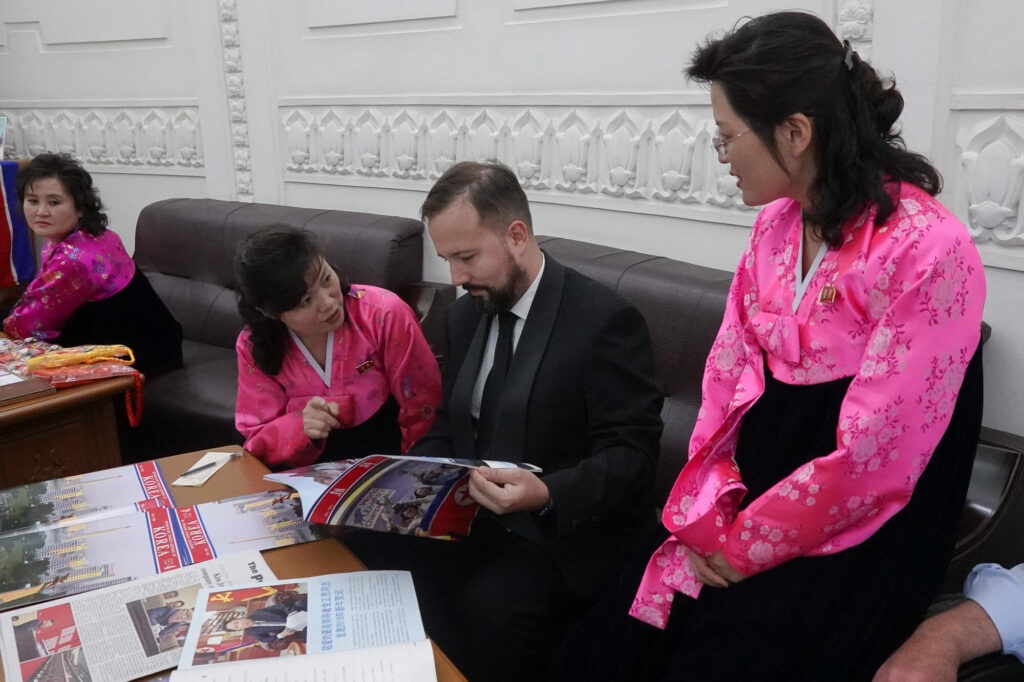
The lift to the top costs 5 EUR which is paid at a booth in the waiting foyer which has couches and magazines. Souvenirs are also available for purchase. Both the lift and the viewing balcony have limited capacity, and photos are permitted from all angles of the tower. At ground level, explore the picturesque scenes of the waterfront, a popular spot for painters, and for students on excursions to study up on the Juche Idea.
The Juche Tower is visible as we drive through Pyongyang, and you’ll get an iconic view of the structure itself and architectural symmetry from the Grand People’s Study House and Kim Il Sung Square. To see the Juche Tower lit up at night, the Taedonggang Dining Boat on many of our itineraries is the perfect vantage point! You may also have a view of it from your room at the Koryo Hotel. We also pass the Juche Tower on our Pyongyang bike tour routes.
The Juche Tower is open every day but is subject to closure in rare circumstances, most notably over New Year’s Eve when fireworks displays are prepared at the tower. Access to the tower is closed at night.
